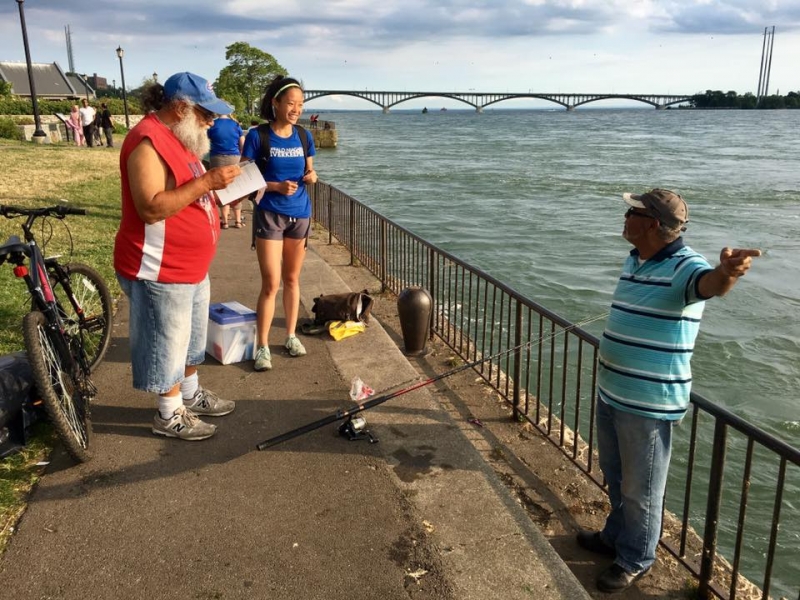Guest blog by: Wendy Paterson; Community Engagement Manager, Buffalo Niagara Waterkeeper
Western New York State (WNY) lies in the heart of the lower Great Lakes Basin and includes the Niagara River Watershed. The Niagara River Watershed is notable for its important habitats, which supports lake sturgeon, muskellunge, lake trout, walleye, and northern pike, and has been internationally recognized as an important migratory route for birds. For 30 years, Buffalo Niagara Waterkeeper (Waterkeeper) has been preventing litter from polluting local waterways through land-based cleanups in WNY.
WNY is no stranger to monumental environmental issues. The Erie Canal knocked on its doorstep in the 1800s, opening the door to invasive species, and the tragedy of Love Canal spurred the environmental movement in the 1970s. Distinguished as a significant habitat by the New York State Department of State Significant Coastal Fish and Wildlife Habitats designation program, marine debris negatively impacts the long-imperiled coastal fish and wildlife habitats of the Niagara River Watershed. However, unlike other pollution sources of the region, it is one every community member can take direct action to remove and prevent. The WNY community continues to fight ongoing sources of pollution and advocate for positive change to protect our prized natural resources.
The newly established partnership between the NOAA Marine Debris Program and Waterkeeper creates a direct connection with a region that has been shown to be one of the largest contributors of microplastics to the Great Lakes (Baldwin et al., 2016). With the funding provided by a NOAA Marine Debris Program Removal Grant, community volunteers will be able to remove over 20,000 pounds of marine debris and couple the effort with a robust pollution prevention program. Waterkeeper’s short-term goal is the removal of marine debris in Great Lakes waters, improving habitat and reducing the likelihood of entanglement for resident wildlife, such as the New York state species of special concern, the eastern spiny softshell turtle.

The project includes in-water and land-based debris removal efforts, marine debris educational art creation and installations, and pollution prevention outreach and workshops for recreational and subsistence anglers. Over the next two years Waterkeeper will be embarking on four new additions to its long running litter removal efforts:
- Regular in-water cleanups via kayaks
- Educational art displays
- Monofilament fishing line recycling bins
- Angler-focused pollution prevention workshops
The educational art displays will be hosted at partner organization facilities such as the Buffalo Zoo and the Aquarium of Niagara. The workshops will be provided to anglers in multiple languages (possibly Spanish, Karen, Arabic, and Somali) and intended to be part of the region’s refugee and immigrant resettlement programs, with the help of local partners including Jericho Roads and the International Institute. The monofilament recycling bins will be built and maintained by the Niagara Musky Association and Waterkeeper volunteers.

Ultimately, Waterkeeper plans to engage 8,000 people in marine debris removal, pollution prevention, education, and data collection by November 2021. This collaborative community approach to marine debris removal will encourage long-term behavioral changes that will empower the recreational fishing community, local residents, and visiting tourists to take direct action against a local source of water pollution and inspire a sense of responsibility for the Niagara River Watershed. The individuals that participate in this project will come away with an unforgettable awareness about the impacts of marine debris on coastal habitats, fish species, wildlife, and drinking water.

Will you be removing down trees in the Cayuga creek in the falls